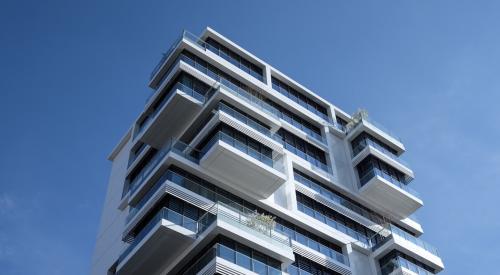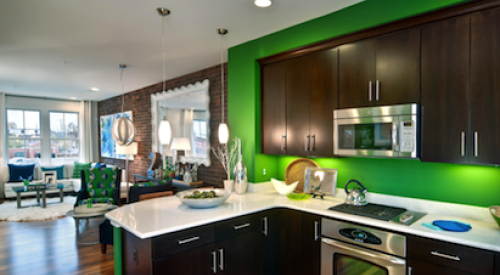|
Las Vegas may soon look like Manhattan, with condo skyscrapers rising up out of the flat desert. The question is, can traditional single-family home builders make a living in a town like this?
That's not an idle inquiry — because Las Vegas may not be so different from other housing markets across the country, perhaps just a few years ahead.
On February 2, Clark County commissioners approved eight new condominium and mixed-use projects for Las Vegas.Just The Beginning
This is just the start of a deluge of high-rise and mid-rise housing currently in the entitlement pipeline, under the leadership of Las Vegas mayor Oscar Goodman, a proponent of high-rise housing development.
"Mayor Goodman has been a powerful force making high-rise happen," says local housing market analyst Steve Bottfeld of Market Solutions. "He understands what the urban core of a city needs.
"High-rise is here to stay in Las Vegas. The shortage of development land is an affliction that won't go away. But high-rise condo product is also meeting the market for urban lifestyles head-on," Bottfeld says.
"The most precious commodity to people today is their time. You can see this in San Diego and Chicago as well as Las Vegas. All of the high-rises that are being built here on The Strip have valet and concierge services. It's a lifestyle choice that affluent people are making."
Many Las Vegas housing pros are concerned about the high-rise housing trend. First, investors from around the world drive much of the demand. Ironically, the investors will be not more than part-time residents, if at all. And condos, like rental apartments, are built all at once — so it's easy to over-build. "If you look at those towers in Las Vegas at night, you don't see a lot of lights on," says housing analyst and PB columnist John Burns. "There's a lot of risk in high-rise. I hope they have higher profit margins built into their pro formas."
Richard Lee, vice president of First American Title of Nevada, says only a portion of the market is speculative, and even that is unlikely to trigger a pricing bubble like the one that hit the single-family market a year ago.
"The Strip is mostly investors and second home buyers," he says. "Only 20 percent to 30 percent permanent residents. And all of the product is pricey, $500 a square foot and up. But downtown is different —70 percent of those buyers will actually live there. The South Strip is more affordable and less investor-driven, and we have high-rise scattered in urban/suburban pockets all around. Those are not investors."
The 2004 pricing bubble was driven by investors competing to buy scarce product, mostly detached homes. All of the high-rise condos on the market and in the pipeline are already alleviating that kind of pricing pressure. "The luxury market for detached houses from $500,000 to $2 million has already slowed," Lee says. "It seems to be hit by people deciding they'd rather live in a high-rise condo right on the Strip than out on a golf course. If high-rises cause a problem, it's likely to be over-building — too much product, not too little.
"My concern is that there's so much money from all over the world chasing these deals," Lee says.
"Goldman Sachs is investing big in several projects. There's a lot of money coming in from Canada that really originates in Asia. A lot of big funds from around the world want to invest in U.S. real estate, and Las Vegas is on their radar. The financial institutions say they impose a rule that projects must be 60 percent to 70 percent pre-sold before construction can start. But when the time comes, they seem to start even if only 40 percent of the units are pre-sold. And how do you measure demand when it comes from all over the world?
"If interest rates go up, it would be easy to tip into an over-built market very fast," Lee cautions.
The other concern is that single-family builders are not building condos. "So far, none of the traditional builders are doing high-rises, not even the big public companies," says Bottfeld, "but this year, three of the top 10 are doing mid-rises for the first time. Others want nothing to do with it. I think that's a mistake. In 10 years, that will be all you can build."
Rather, the Las Vegas high-rise builders are specialists from Canada, New York, Florida, California and Chicago. Survival in land-price-constrained markets all across the country may soon dictate that traditional single-family builders acquire the expertise to do high-rise and mid-rise housing.
|












